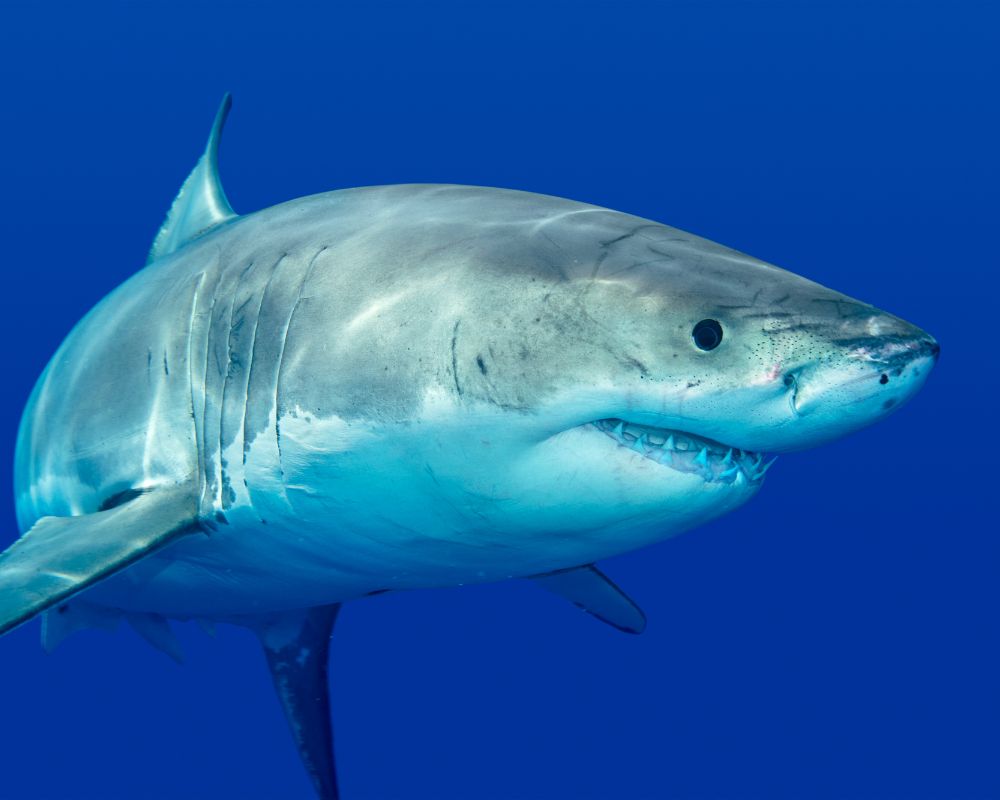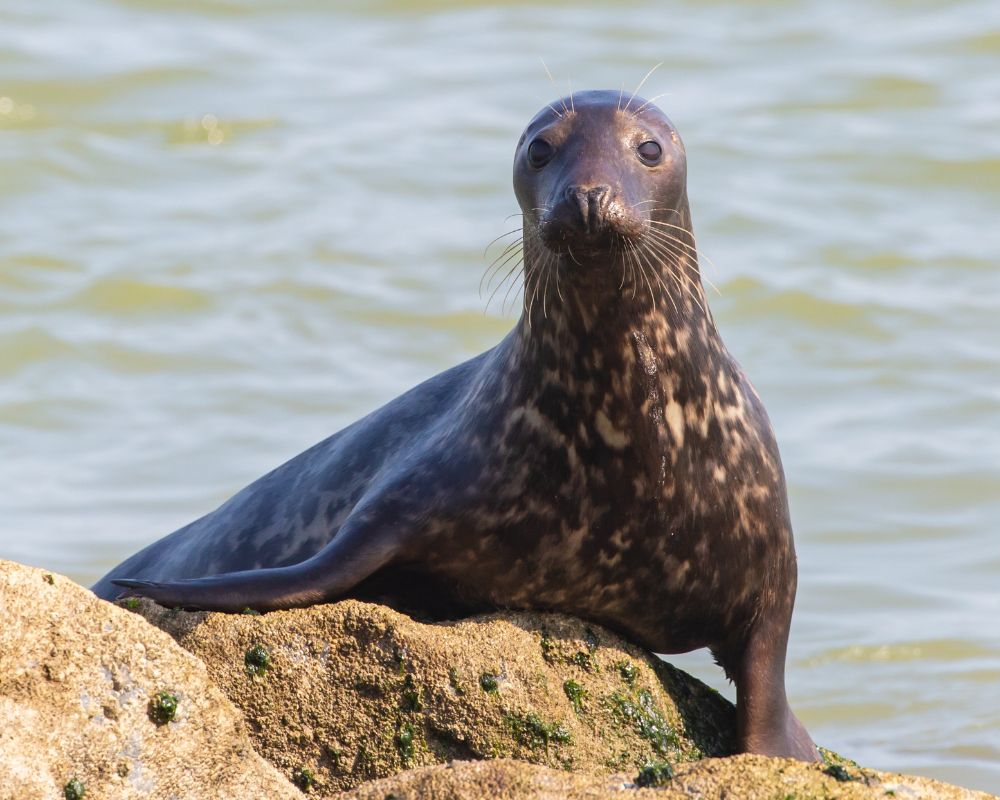The great white shark is perhaps one of the most iconic predators in the ocean, with a reputation for being fearsome and deadly. But how do these incredible creatures actually catch and eat their prey, particularly seals? In this post, we’ll explore the fascinating world of great white shark feeding habits and reveal the strategies they use to hunt and consume their prey.
Great white sharks typically hunt seals by ambushing them from below and using a surprise attack to catch them off, guard. They will then use their powerful jaws and sharp teeth to deliver a fatal bite to the seal, typically targeting vital organs such as the liver or heart. Great white sharks also use their impressive size and strength to drag seals underwater and drown them, allowing them to consume their prey in a more controlled manner.
Hunting and Feeding Techniques Used To Attack Seals


Great white sharks use a variety of techniques to hunt and consume their prey, including seals. Here’s a breakdown of some of their most effective strategies:
Ambush Attacks
One of the most common hunting techniques used by great white sharks is the ambush attack. This involves waiting patiently near the surface of the water and then launching a surprise attack on an unsuspecting seal. Great white sharks are able to approach seals from below, where they are less likely to be seen, and then launch themselves upward with incredible speed and force.
Burst Speed
Another technique used by great white sharks is their incredible burst speed. When chasing after a seal, great white sharks can reach speeds of up to 35 miles per hour, making them one of the fastest creatures in the ocean. This burst of speed allows them to quickly close the gap between themselves and their prey, making it more difficult for the seal to escape.
Breaching
Perhaps the most spectacular hunting technique used by great white sharks is breaching. This involves launching themselves completely out of the water and then crashing back down on top of a seal. Breaching is a risky technique for great white sharks, as it can leave them vulnerable to injury or beaching themselves. However, when executed successfully, it can be a highly effective way to catch a seal by surprise.
Striking From Below
Finally, great white sharks are known for their ability to strike from below. Seals often swim close to the surface of the water, which makes them vulnerable to a sudden attack from below. Great white sharks can use their streamlined body shape and powerful jaws to launch upward and take a seal by surprise, delivering a powerful bite that can incapacitate or kill it.
Strategies for Hunting Seals

Great white sharks are apex predators that have evolved a range of strategies for hunting and consuming their prey, including seals. Here are some of the most effective strategies they use:
Targeting Weak Or Injured Seals
Great white sharks are able to detect seals that are weak or injured, and they will often target these individuals as they are easier to catch. Seals that are already injured or sick will have a harder time escaping from a great white shark, making them more vulnerable to attack.
Using Stealth And Camouflage
Great white sharks are masters of stealth and camouflage, and they use this to their advantage when hunting seals. They are able to approach their prey quietly and remain hidden until the last moment, giving seals little time to react. Additionally, their dark upper bodies and light underbellies make them difficult for seals to spot against the dark ocean floor.
Utilizing Hunting Grounds
Great white sharks often return to the same hunting grounds year after year, as they become familiar with the movements of the seals in the area. By staking out these areas, they are able to learn the best times and places to hunt, increasing their chances of success.
Exploiting Natural Features
Finally, great white sharks are experts at exploiting natural features of their environment to aid in hunting. For example, they may use underwater ridges or channels to funnel seals into a more confined area, making them easier to catch. They may also use currents or tides to their advantage, allowing them to sneak up on seals from behind and launch a surprise attack.
How Does Great White Shark Anatomy Help in Hunting Seals?
Seals are fast and agile prey, which means great white sharks need to be well-equipped to catch and eat them. Here’s a breakdown of the anatomy of a great white shark and how it helps them in their hunting pursuits:
Streamlined Body Shape
Great white sharks have a sleek and streamlined body shape that allows them to move efficiently through the water. This is important because they need to be able to catch up to fast-moving seals in order to make a kill. Their body shape also allows them to maneuver quickly and change direction on a dime, which is essential when hunting prey that is constantly on the move.
Powerful Jaws And Teeth
One of the most iconic features of great white sharks is their powerful jaws and teeth. They have multiple rows of serrated teeth that are designed to tear through flesh and bone with ease. This allows them to deliver a powerful bite to a seal, which can immobilize or kill it. Additionally, their jaws are highly mobile and can extend outward when biting, which means they can swallow large chunks of flesh whole.
Heightened Sense Of Smell
Finally, great white sharks have an incredible sense of smell that allows them to detect blood and other scents from miles away. This is a crucial skill when hunting seals, which have a distinctive scent that great white sharks can pick up on. By using their sense of smell, great white sharks are able to track down their prey and make a kill with precision.
FAQs
How Many Seals Do Great White Sharks Eat?
Great white sharks consume a variable number of seals depending on their size, location, and availability of prey. However, research suggests that an adult great white shark can consume up to 11 tons of food per year, with a significant portion of that being seals.
How Many Seals Do Great White Sharks Eat A Day?
It is difficult to estimate how many seals a great white shark can eat in a day, as their feeding patterns can be sporadic and influenced by factors such as prey availability and hunting success. However, based on their annual consumption rates, they likely consume several seals per week on average.
Do Great White Sharks Eat Leopard Seals?
Leopard seals are not typically found in the natural habitat of great white sharks, which is the coastal regions of the Pacific and Indian Oceans. However, in rare instances where their ranges overlap, great white sharks have been known to attack and consume leopard seals.
Do Great White Sharks Eat Elephant Seals?
Yes, great white sharks are known to consume elephant seals, which are common prey species in their natural habitat. In fact, elephant seals can be a particularly attractive target for great white sharks due to their large size and high-fat content.
Do Great White Sharks Eat Earless Seals?
Yes, great white sharks have been known to eat earless seals, which are a group of seals that lack external ear flaps. These include species such as harbor seals and gray seals.
Do Great White Sharks Eat Gray Seals?
Yes, gray seals are a common prey species for great white sharks, particularly in the waters off the coast of New England. Gray seals are a particularly attractive target for great white sharks due to their large size and abundance in this region.
Do Great White Sharks Eat Harbor Seals?
Yes, They do! Particularly in the waters off the coast of California. While smaller in size than some of their seal counterparts, harbor seals are still a valuable food source for great white sharks.[1]
What Kind Of Seals Do Great White Sharks Eat?
Great white sharks are known to consume a variety of seal species, including elephant seals, harbor seals, gray seals, and earless seals such as common seals and ringed seals. Their exact prey preferences can vary based on factors such as geographic location and prey availability.

